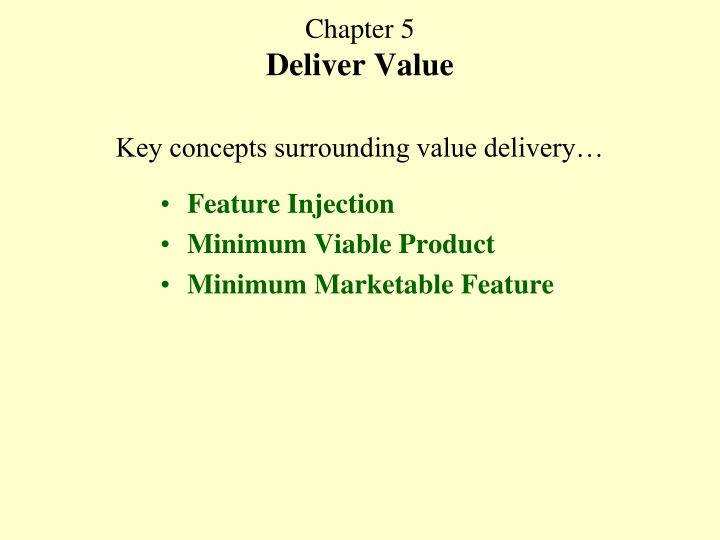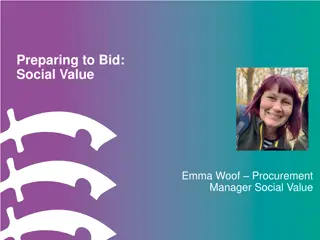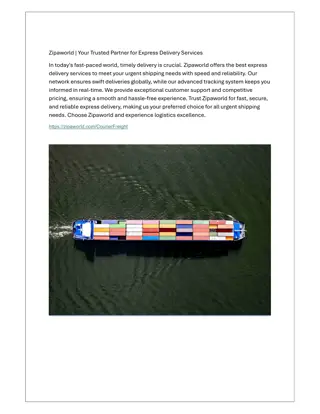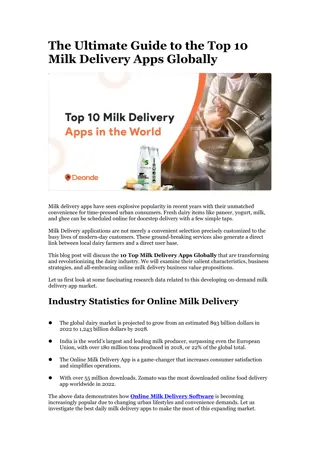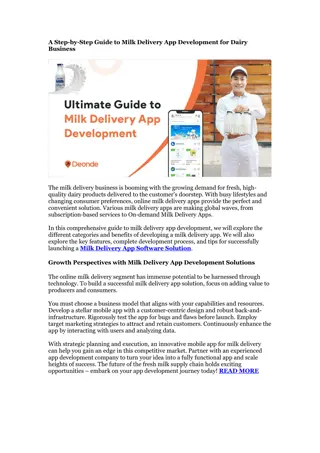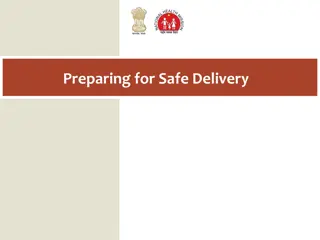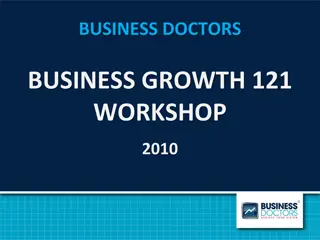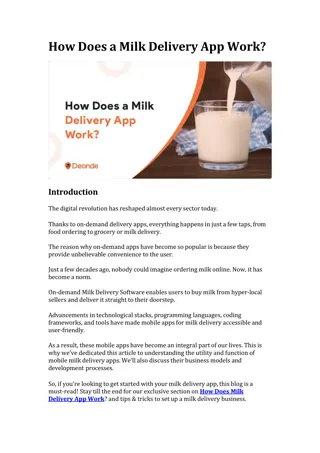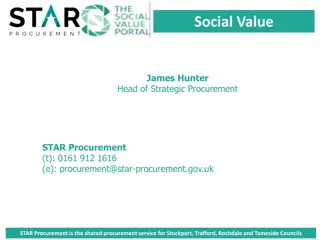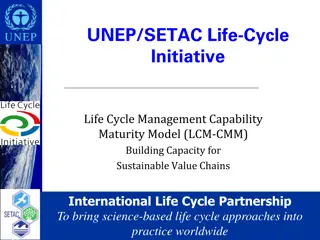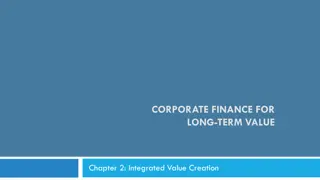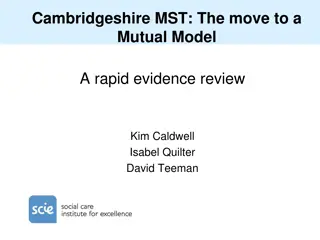Key Concepts in Value Delivery for Business Success
In this chapter, you will delve into the essential aspects of delivering value in business, from identifying and injecting features to understanding business value models. Learn about feature injection, aligning projects with organizational strategy, and assessing the impact on revenue objectives through business value models, ultimately enhancing decision-making for successful outcomes.
Download Presentation

Please find below an Image/Link to download the presentation.
The content on the website is provided AS IS for your information and personal use only. It may not be sold, licensed, or shared on other websites without obtaining consent from the author.If you encounter any issues during the download, it is possible that the publisher has removed the file from their server.
You are allowed to download the files provided on this website for personal or commercial use, subject to the condition that they are used lawfully. All files are the property of their respective owners.
The content on the website is provided AS IS for your information and personal use only. It may not be sold, licensed, or shared on other websites without obtaining consent from the author.
E N D
Presentation Transcript
Chapter 5 Deliver Value Key concepts surrounding value delivery Feature Injection Minimum Viable Product Minimum Marketable Feature
Feature Injection Inject features that represent the work the team does (outputs) to create that value (outcome) Key is knowing the value the initiative intends to deliver delivering the features that provide value communicating information about the features through examples Lean Metaphor Stand by the out door of a Toyota Factory that is idle, empty and with all workers waiting Request a car! You would see the parts pulled to the out door, starting at the in door. If you watch you would see the Kanban cards flowing backwards against the flow of value
Identifying value Feature Injection Begins by creating an understanding about the value to be delivered The value is expressed in the form of a model The team can repeatedly test progress toward delivering value as the work proceeds Business Value? A project delivers business value when it increases or protects revenue or reduces cost
Business Value? Two Definitions 1. A project delivers value when it increases or protects revenue or reduces cost ion alignment with organizational strategy 2. IRACIS Increase Revenue Avoid Costs Improve Service value should not be focused on profit or shareholders, but on delighting customers.
General way to of describing Business Value the business value of an IT project can be gauged by whether it helps an organization meet one or more goals measured based on the project s impact on one or more objectives The Business Value Model describes the impact of the project on your selected objectives so you can reevaluate expectations based on new information throughout the course of the project if it appears that the project will not accomplish what is needed, corrections can be made rather than continuing and finding out it s not going to deliver
Budget Spreadsheet A Business Value Model Used to assess the impact of decisions on revenue objectives Example: The project is expected to generate an additional $15 million in profit Based on the following assumptions 1. We achieve 20% of the sales of existing project XYZ ($100 million a year) 2. The total cost of designing ad producing the product is $5 million 3. Our product is the first to market 4. We are able to release the product two months before Christmas
Business Value ModelNot just a number! Describe the target of the objective Explains the assumptions underlying the target Provides a test for what happens to the objectives if the underlying assumptions change Another perspective Business value is determined by the users Identify the relevant stakeholders Identify their needs and goals Agree on how to measure/test the achievement of the user needs and goals Select the (few) most important measurements and tests (the value drivers ) Define the relationship between the Value Drivers Use the Value drivers to focus and prioritize the work, from start to finish Profit but also Customer Satisfaction
Inject Features Prioritize the Features identify value first Then, iteratively identify features that are needed to deliver value Features and their User Stories Measuring value should be at the Feature level By working from value to features you don t assign value to individual stories or need to assign value to any change When a feature is injected identify the output that represents the feature work backward to understand what you need to do to deliver that output
Stakeholders What outputs do they expect Note outputs should be attached to stakeholder needs Understanding stakeholders (users) is necessary in order to know what outputs are actually needed This allows for the identification of the outputs that deliver the expected value! Once the needed outputs are identified, you can work backwards to identify what processes are needed to provide the outputs and inputs the process needs to create the outputs
Table 5.1 Payroll Stakeholders and Their Expectations Stakeholder Employees Expectations If the payroll system did not exist, they might not get paid. This probably not the case, but it certainly may be a more complicated process to get payroll completed. From the employees perspective, the payroll system adds value because it generates checks. When employees get paid, they continue to work, so the value is in protecting revenue by keeping employees satisfied that money is still coming in the door. (Yes, I know this is kind of a stretch, but it s the one that seems to fit best.) Assuming that the organization would still pay its employees even without a payroll system, the lack of a system would make the process inefficient and more prone to error; so creating a payroll system reduces costs. And to some extent, it protects revenue by reducing the risks of incorrect paychecks. Even if you could pay employees without a payroll system, the lack of organized data makes it much more complicated to perform analysis on payroll information, which indirectly leads to increased risk for the organization, similar to the items described previously. Payroll department Employee relations manager
Spot the Examples Use models to describe the outputs & processes and the inputs used to create them You want / need a shared understanding by all those involved in delivering features Create examples to get a better understanding They provide concrete situational guidance for developers They give the team a way to test the models to make sure all situations are accounted for The author for the submission system and all the features, examples were used to describe the features Features were described in terms of examples The examples were used as the basis for preparing automated acceptance test
Feature: Edit conference dates (page 62) As a conference chair, I want to change session submission deadlines. Background: Given I am logged in as Connie The session submissions should be open And session edits should be open And accepted session edits should be open Scenario: Update Open Date When I change the session submission start date to 1 day from now Then session submissions should be closed Scenario: Update Close Date When I change the session submission and date to 1 day before now Then session submissions should be closed Scenario: Update Edit Date When I change the session submission edit date to 1 day before now Then session edits should be closed
Feature: Edit conference dates As a conference chair, I want to change session submission deadlines. Scenario: Update Edit Date When I change the session submission edit date to 1 day before now Then session edits should be closed Scenario: Update Accepted Session Edits Start Date When I change the accepted submission edit start date to 1 day from now Then accepted session edits should be closed Scenario: Update Accepted Session Edits End Date When I change the accepted submission edit end date to 1 day before now Then accepted session edits should be closed
Starting with the value you want to deliver.. using that value to decide what features to build next and describing that feature through the use of real- life examples proves to be a simple, effective way to build the right thing and not build things that are not right (or needed)!
Minimum Viable Product Contrary to traditional development, which usually involves a long, thoughtful incubation period and strives for product perfection, the goal of the MVP is to begin the process of learning, not end it. A MVP helps entrepreneurs start the process of learning as quickly as possible. It is not necessarily the smallest product imaginable, although it is simply the fastest way to get through the Build-Measure-Learn feedback loop with the minimum amount of effort.
Build-Measure-Learn Eric Ries
Minimum Marketable Features Features The main planning unit for releases User stories The main planning unit for iterations
Minimum Marketable Features Unlike a prototype or concept test, an MVP is designed not just to test a fundamental business hypothesis Minimum the smallest possible group of features that deliver significant value to the user Marketable provides significant value to the customer Feature something that is observable to the user The MMF is a small, self-contained feature that can be developed quickly that delivers significant value to the user (stakeholder)
MVP and MMF MVP is the version of the product that lets the team complete the Build-Measure-Learn loop as quickly as possible with least amount of effort it delivers value to stakeholders (users) was created for use in the context of starting a new business MMF is a small, self-contained feature that can be developed quickly and provides significant value to the user
Continuous Deployment Small Batches Minimum Viable Product Refactoring Customer Development Five Whys Split Testing Actionable Metrics Net Promotor Score
If You Remember Nothing Else Effective analysis starts with the outcome and works its way backward through output, process and input. Minimum Viable Products (MVPs) are intended to get information. Minimum Viable Features (MVFs) are intended to capture value.
